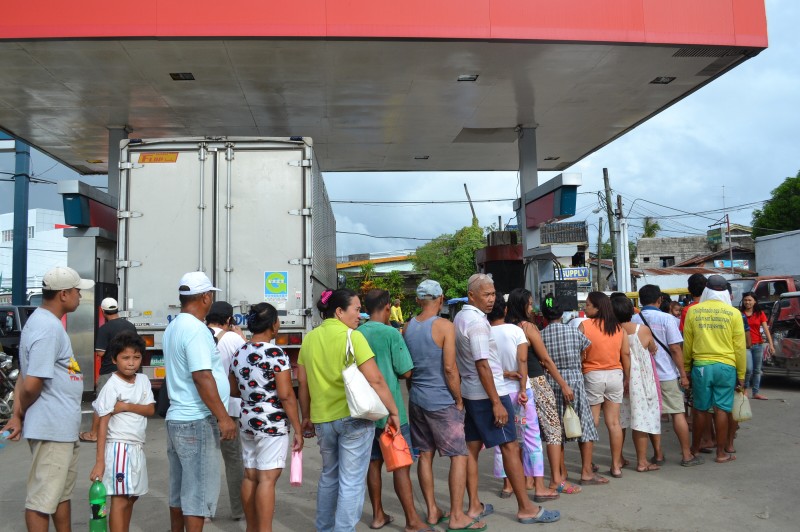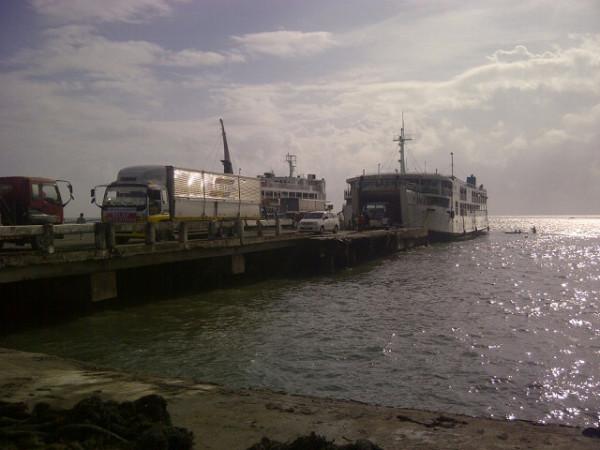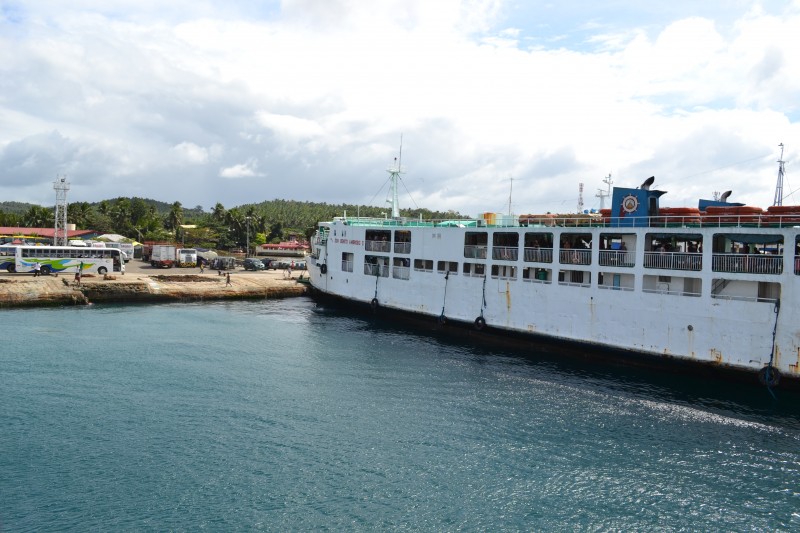Day 1 and 2: The new norm
Our three-person INQUIRER.net team left Manila on November 19 and reached Matnog port in Sorsogon the next day.
Expecting a long line of vehicles waiting to board roll-on/roll-off (RoRo) ships, we were surprised to find the roads clear. The port congestion caused by the massive pouring in of aid had already eased, after more ferries and ramps were deployed.
In Matnog, large groups of aid workers from organizations like the International Committee of the Red Cross were waiting to cross the sea to Northern Samar. Dozens of trucks carrying fuel and electric posts were also in line.
READ: Additional ferries, port ease traffic in Matnog
Travel was rough mid-way to Samar island, heavy rainfall pummeling the ship as it thrashed against large waves. Only an hour away, however, was the sunny and picturesque town of Allen in Northern Samar.
Although Yolanda mostly spared Northern and Western Samar, residents had been bearing with the island-wide blackout for a week and a half after the storm’s powerful winds toppled transmission lines.

Residents endure long lines to buy kerosene from a gas station in Calbayog. PHOTO BY KRISTINE SABILLO/INQUIRER.net
Businesses requiring electricity started using generator sets or simply closed down. In Calbayog City, people lined up in gas stations for their daily supply of kerosene. National officials said the situation had started to normalize; at that time, however, the definition of normal seemed relative. All we saw was the new norm—of people adapting to the power and supply shortages.
(Some towns remained disconnected to the grid until early 2014, despite Energy Secretary Carlos Jericho Petilla’s promises.)
READ: ‘Yolanda’ aftermath: Long lines at Calbayog gas stations
In Catbalogan City, the team was lucky to find a hotel with a generator, allowing us to charge our equipment one last time. Many of the hotels were fully booked by NGO workers and other journalists also on their way to remote areas in the southern part of the island. One aid worker said he was delivering hundreds of motorcycles to his group’s volunteer doctors, allowing them to travel easily from town to town.
With the fuel shortage, gas stations in the rest of the city were either closed or selling fuel at exorbitant prices. In some areas, public transportation was out of the question.




















